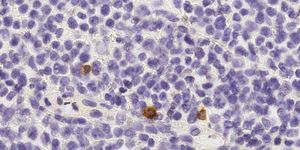Could your bedding make you sick?
Do you use duvets or pillows filled with goose or duck feathers? While indeed cozy, doctors have issued a new warning related to feather filled bedding called “feather duvet lung.”
Many already choose down and feather alternatives due to allergic responses, but this case is far different than typical allergies. This case of “feather duvet lung” was published this week online in the journal BMJ Case Reports and serves as a crucial reminder for doctors to about bedding in similar cases.
Back in November of 2016, a 43-year-old man visited his doctor due to three months of breathlessness, dizziness, and fatigue. As a non-smoker and without other respiratory symptoms, he was diagnosed with a lower respiratory tract infection. He experienced a slight reprieve from the symptoms, but by December 2016, his breathlessness was getting worse and impacting simple activities such as walking around his home. In the case study, the patient reported that “going upstairs to bed was a 30-minute activity as I could only manage two stairs at a time and then needed to sit and rest.”
Possible triggers such as mold and pets—even though he did have a cat and dog—were eliminated. The only recent change to his household setting was switching out synthetic-filled bedding for feather filled. After a blood test revealed a highly abnormal amount of avian antibodies and a chest x-ray showed signs of hypersensitivity pneumonitis, he was diagnosed with feather duvet lung. He was experiencing an exaggerated immune response to the feather dust, causing the air sacs and airways in his lungs to become severely inflamed.
The case cites feather duvet lung as a rare subgroup of bird fancier’s lung (BFL) that is “caused by inhaling organic dust from duck or goose feathers in duvets or pillows.” The severity of feather duvet lung ranges from minor to chronic, and the onset of the condition following exposure to the feather dust ranges from three weeks to five years.
This man’s case was treated with a course of steroids and the recommendation to switch back to synthetic bedding. The case study reports that his symptoms cleared up after 12 months. Because feather duvet lung is often misdiagnosed, the true prevalence of the condition is unknown.
Sources: BMJ, Science Daily









